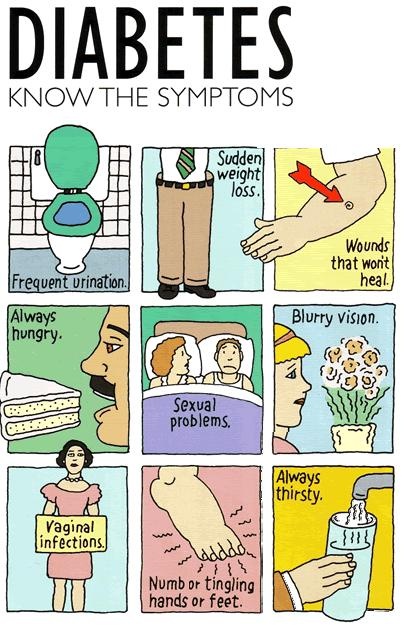The onset of type 1 diabetes is typically during childhood or puberty, and symptoms develop suddenly. Patients with type 1 diabetes can usually be recognized by the abrupt appearance of polyuria (frequent urination), polydipsia (excessive thirst), and polyphagia (excessive hunger), often triggered by stress or an illness. These symptoms are usually accompanied by fatigue, weight loss, and weakness. The diagnosis is confirmed by a fasting blood glucose (FBG) greater than or equal to 126 mg/dl, commonly accompanied by ketoacidosis. Fasting is defined as no caloric intake for at least 8 hours. When the diagnosis of type 1 diabetes is uncertain by clinical presentation, testing for circulating islet-cell antibodies is recommended.
Note: The oral glucose tolerance test is not routinely used as a diagnostic tool for diabetes because it is difficult to perform in practice and the results are highly variable; however, it is used to screen pregnant women for gestational diabetes.
Diabetes Symptoms
- Frequent urination
- Sudden weight loss
- Wounds that won’t heal
- Always hungry
- Sexual problems
- Blurry vision
- Vaginal infections
- Numb or tingling hands or feet
- Always thirsty

